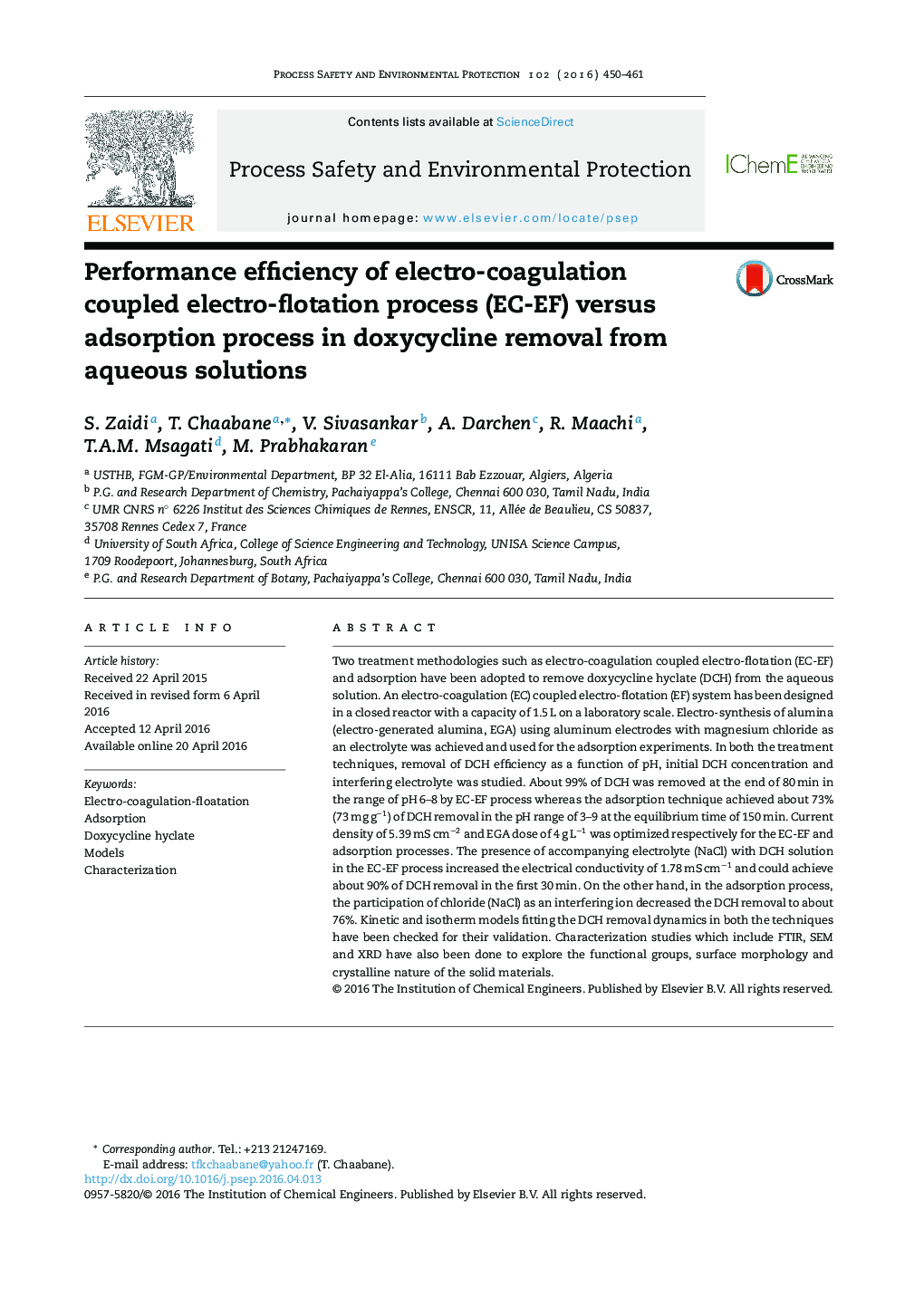| کد مقاله | کد نشریه | سال انتشار | مقاله انگلیسی | نسخه تمام متن |
|---|---|---|---|---|
| 588099 | 1453336 | 2016 | 12 صفحه PDF | دانلود رایگان |
• Doxycycline removal was achieved by EC-EF and adsorption treatment processes.
• Al(OH)3 was the main player behind the removal of doxycycline in the two processes.
• EC-EF process achieved 99% of doxycycline removal and for adsorption it was 73%.
• The adsorption of doxycycline improved from 95% to 99% due to the influence of Ca2+.
Two treatment methodologies such as electro-coagulation coupled electro-flotation (EC-EF) and adsorption have been adopted to remove doxycycline hyclate (DCH) from the aqueous solution. An electro-coagulation (EC) coupled electro-flotation (EF) system has been designed in a closed reactor with a capacity of 1.5 L on a laboratory scale. Electro-synthesis of alumina (electro-generated alumina, EGA) using aluminum electrodes with magnesium chloride as an electrolyte was achieved and used for the adsorption experiments. In both the treatment techniques, removal of DCH efficiency as a function of pH, initial DCH concentration and interfering electrolyte was studied. About 99% of DCH was removed at the end of 80 min in the range of pH 6–8 by EC-EF process whereas the adsorption technique achieved about 73% (73 mg g−1) of DCH removal in the pH range of 3–9 at the equilibrium time of 150 min. Current density of 5.39 mS cm−2 and EGA dose of 4 g L−1 was optimized respectively for the EC-EF and adsorption processes. The presence of accompanying electrolyte (NaCl) with DCH solution in the EC-EF process increased the electrical conductivity of 1.78 mS cm−1 and could achieve about 90% of DCH removal in the first 30 min. On the other hand, in the adsorption process, the participation of chloride (NaCl) as an interfering ion decreased the DCH removal to about 76%. Kinetic and isotherm models fitting the DCH removal dynamics in both the techniques have been checked for their validation. Characterization studies which include FTIR, SEM and XRD have also been done to explore the functional groups, surface morphology and crystalline nature of the solid materials.
Figure optionsDownload high-quality image (192 K)Download as PowerPoint slide
Journal: Process Safety and Environmental Protection - Volume 102, July 2016, Pages 450–461
